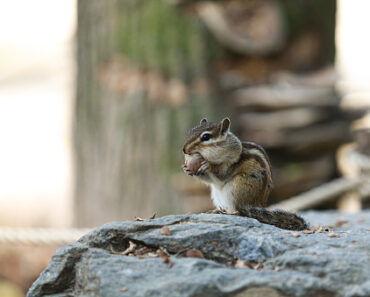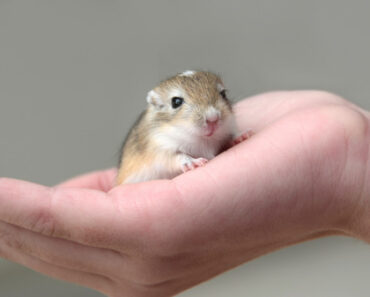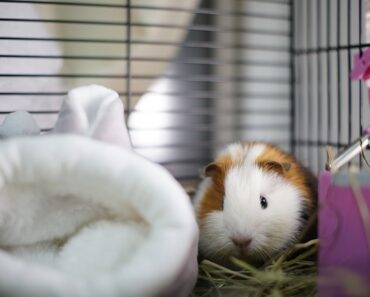
The Korean squirrel is a hardy animal that can live up to ten years if it is well cared for. Nevertheless, it can be affected by various diseases, which will then require a visit to the veterinarian.
Dermatoses (skin diseases)
Symptoms are usually itching, the presence of depilated areas (alopecia) or even scratch wounds.
Tail disorders
Beware, never catch a squirrel by the tail! This could result in a scalp of the tail (fur slip). A mycosis due to Candida albicans also causes a necrosis of the tail.
The veterinarian must then proceed to a removal of the tail (caudectomy), without consequences for the animal.
Affections of the jowls
Infections of the cheekbones are relatively frequent; tumors of the cheekbones are rarer. These conditions are recognizable by the size of one of the two cheekbones. A small benign surgery is usually required.
Dental and oral abnormalities and conditions
Korean squirrels are subject to the same dental conditions as other rodents. In fact, the incisors are in continuous growth throughout the life of the animal, they wear out by rubbing against each other. If the incisors are misaligned, they do not wear out. The symptoms observed are: anorexia, salivation, wounds on the contours of the mouth, lack of chewing. In the case of this anomaly, the teeth must be regularly cut or even removed and the animal must no longer be fed hard food. These anomalies are hereditary.
Squirrels also sometimes break a tooth. You must then wait for it to grow back.
Even if your pet has correctly aligned teeth, it is often necessary to have them filed or cut by your veterinarian. Indeed, if the upper incisors grow too much, they can go into the palate and cause serious damage.
Finally, Korean squirrels are prone to “gum disease”, which is caused by the accumulation of solid food debris between the incisors. This leads to chronic gum infection. You should consult your veterinarian to treat the animal and prevent recurrences.
Respiratory conditions
1) Rhinitis or coryza.
It is an inflammation of the upper respiratory tract caused by viruses and/or bacteria. The disease is favoured by drafts, stress, poor environmental hygiene (especially overly soiled bedding). Symptoms observed are the following: depression, dysorexia, discharge and crusts in the nose, red and watery eyes, sneezing… The veterinarian will then prescribe an antibiotic treatment. It is also necessary to improve the living conditions of your animal (calm, clean litter, cage placed away from drafts). Do not leave a coryza lying around, because it can then develop into bronchopneumonia, with much more serious consequences!
2) Bronchopneumonia.
It is an inflammation of the bronchi and lungs. Symptoms are: anorexia, apathy, ruffled hair. It is necessary to consult the veterinarian as soon as possible. In the meantime, the animal must be kept warm and stuffed (boiled in a syringe).
Allergies
The Korean squirrel would also be prone to allergies.
To prevent respiratory ailments, beware of sudden temperature changes, drafts, faulty ventilation, and soiled bedding!
Digestive diseases
The following conditions are the most common:
- Constipation, due to a lack of fiber in the ration
- Meteorism (abnormal formation of gas in the stomach), due to a diet too rich in fruits (such as pears) and vegetables, or a sudden change in diet. The evolution is often fatal.
- Enteritis. The main symptom is diarrhea. The squirrel has soiled butt hair, is slaughtered and eats less. The causes are numerous: sudden change of diet, unsuitable, spoiled or mouldy food, poor cage hygiene, stress, coccidiosis (Tyzzer disease), salmonellosis. The consequences are variable but often important (salmonellosis is very serious and rapidly evolving). A veterinarian must be consulted quickly.
Uro-genital affections
- Cystitis is an infection of the bladder, quite common in Korean squirrels. It results in excessive agitation of the animal, an increase in the emission of urine (pollakiuria), pain when urinating and sometimes hematuria (presence of blood in the urine). The treatment is antibiotic therapy.
- The Korean squirrel is also sensitive to urinary stones, which also cause cystitis.
- Breast tumors sometimes occur in Korean squirrels. They must be removed, but are often benign.
- Korean squirrels may also report pyometritis or metritis, which are infections of the uterus. The symptoms observed are: fever, increased drinking (polydypsia), vulvar discharge. Metritis usually follows pregnancy and parturition, while pyometria often occurs as a result of heat (hormonal imbalance). A veterinarian is then consulted and the treatment is a hysterectomy (removal of the uterus) combined with antibiotic therapy.
- Males are sometimes subject to protrusion of the penis.
Pathology of gestation
- Gestation toxemia. It is due to the production of ketone bodies at the end of gestation, which are toxic for the mother. The symptoms observed are slaughter, trembling, comatose state, and death of the animal within 24 hours. The prevention of this disease requires an adequate diet for the pregnant mother: she must be sufficiently nourished but must not be obese. Do not hesitate to consult your veterinarian at the beginning of pregnancy.
- Hypocalcemia (calcium deficiency). It generally occurs in pregnant or lactating females, but also sometimes in young males. The clinical signs observed are posterior paralysis accompanied by an inability to defecate, muscle contractures, motor incoordination and coma. The veterinarian must be consulted urgently; he will inject your animal with calcium gluconate.
Others
- Nervous disorders. The Korean squirrel is prone to epileptiform seizures, the origin of which is as yet unknown.
- Eye disorders. Males may report cataracts. Again, the origin is not well known.
- Injuries, paralysis and fractures may occur. It is necessary to consult your veterinarian, who will make an X-ray. Usually, fractures will resolve on their own, with rest. Amputation or pinning are also possible.
- Obesity. Korean squirrels can also become obese, which will eventually lead to cardiovascular, liver and kidney problems, and prevent them from frolicking at ease. So watch his weight and diet!
- Heat stroke. When the temperature rises, the animal can get “heat stroke”. Symptoms include increased heart rate (tachycardia), difficult breathing (dyspnea) and apathy. It is important to act quickly: cool the animal by putting it in the shade and wrapping it in a damp cloth. If it is in a state of shock, it is urgent to take it to the veterinarian. To prevent this condition, it is important that your squirrel be placed in a cool, shady place. Do not place the cage under a window that is hot. If you have to transport it by car, cool the car before the trip and place it in the shade (be careful when using the air conditioning or opening the windows, drafts are also harmful to the squirrel…).
At the slightest warning sign, do not hesitate to consult your veterinarian. If possible, consult a veterinarian specialized in New Pets (NAC).






